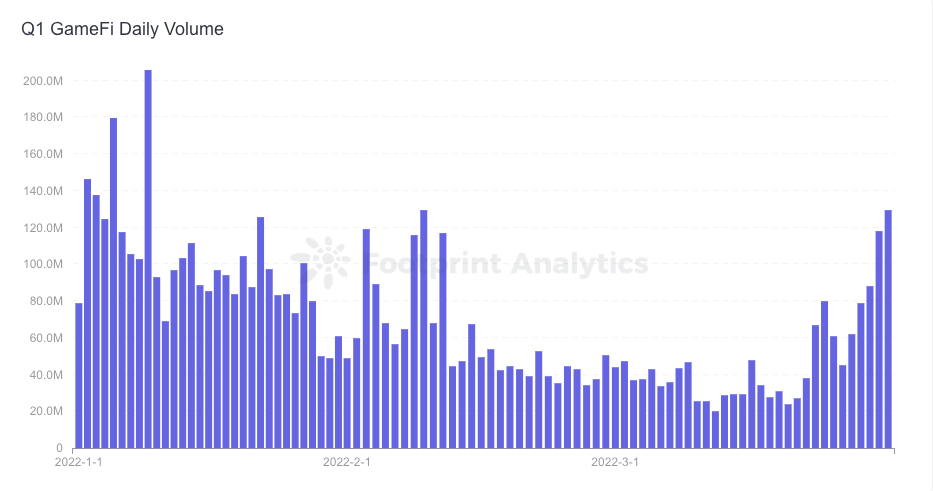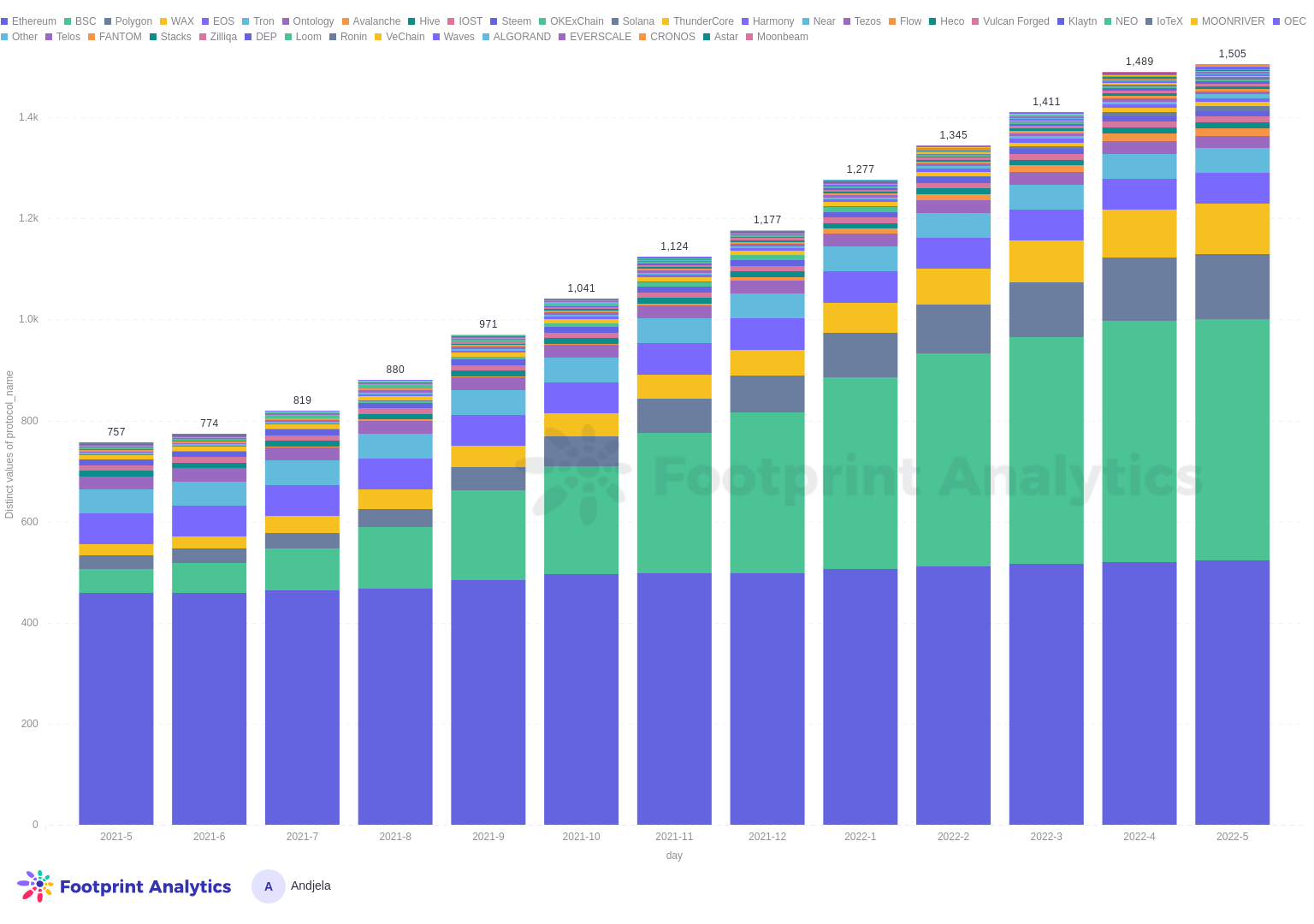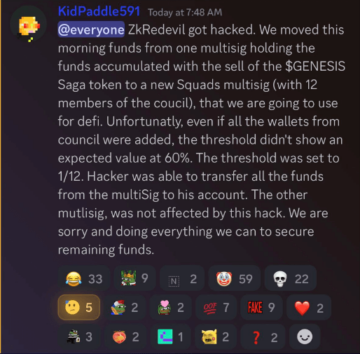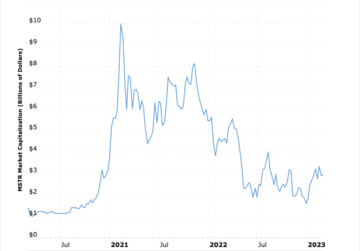The crypto industry has seen its fair share of hype cycles, each led by an emerging new sector that promises a revolution in the world of blockchain. Since the ICO boom of 2017, the industry has seen an equally bombastic DeFi summer in 2020 and an even more hyped NFT rush in 2021.
This year the industry will be amidst another significant trend that’s becoming increasingly hard to ignore—GameFi.
In this series of reports, we dive deep into one of the fastest-growing sectors of the crypto industry and analyze the overall performance of the emerging new world of play-to-earn blockchains.
What is GameFi?
A fusion of gaming and finance, GameFi is a new ecosystem in the crypto industry getting the best of both worlds—the excitement of games and the incentives of a real-world financial system.
GameFi refers to play-to-earn games built on blockchain platforms that offer real-world economic incentives to their players. And while in-game purchases, tokens, and items have long been a part of the gaming world, they lacked any real-world utility and value.
However, the economic incentives provided in blockchain games have value outside of their gaming ecosystems and offer players more utility in the real world.
Blockchain games reward their players with crypto tokens, virtual land, and other NFTs that can be transferred outside of the game’s virtual world and sold on the secondary market.
This simple premise has attracted a significant amount of users and an even more significant amount of money to the world of GameFi. According to a joint report from Footprint Analytics and DeGame, the GameFi market had over 1.2 million active players in Q1 2022. These players helped the sector stay afloat at volatile times by recording a trading volume that exceeded $6.3 billion.
Inside GameFi token trading
As is the case with most of the crypto market, GameFi is also highly correlated with Bitcoin. With a market cap that reached $21 billion at the beginning of the year, GameFi followed Bitcoin’s price rise and fall throughout the entire quarter. The sector’s overall market cap declined throughout January, was followed by a rise and fall in mid-February, and then a sharp rise in March.
Since the beginning of the quarter, the overall market cap of GameFi tokens dropped around 15%, while Bitcoin’s market cap decreased 4% during the same period.

The total trading volume GameFi recorded in the last quarter reached $6.3 billion, with the highest trading volume of $200 million recorded on January 9th. However, daily trading volume failed to reach these numbers by the end of the quarter, recording an average daily trading volume of around $40 million from mid-February to mid-March.

Diving deeper into the sector’s trading volume reveals an interesting trend—the overwhelming majority of the trading volume came from just three chains.
Harmony, Ronin, and Binance Smart Chain accounted for nearly 90% of the total trading volume.
With just over $3 billion, Harmony accounted for 48.5% of the trading volume for the quarter. According to DeGame, the explosion of the DeFi Kingdoms game brought on a lot of transactions, and the game accounted for 80% of the overall trading volume on Harmony.
Ronin was responsible for just under 27% of the overall trading volume with $1.69 billion, while Binance Smart Chain took on a 14% share with $900 million.
Ethereum, by far the largest chain in terms of the overall number of users and market capitalization, accounted for just over 1% of the GameFi trading volume in Q1. The $73.81 million worth of GameFi tokens traded on the chain pale compared to trading volumes on other chains, including Polygon and Solana, and result from high gas fees and slow transaction speeds.

Trading volume, however, isn’t the only indicator of activity in GameFi.
When it comes to the number of transactions, no chain comes close to WAX, which accounted for 77.7% of all GameFi transactions—over 1.4 billion in total. Two games were to blame for this sharp jump—Alien Worlds and Farmers World, which accounted for 47.5% and 45% of the transactions.
Hive blockchain occupied the second spot with 225 million transactions, or just under 12% of the overall number, while Binance Smart Chain accounted for just 2% of the overall transaction number.

The top three chains in terms of the overall number of blockchain games launched on them are Ethereum, Binance Smart Chain, and Polygon.
Despite the low share in the overall trading volume, Ethereum is still the chain with the largest number of games—just over 500. However, it’s also the chain with the slowest growth in the number of games, with only 16 new games added in Q1.
Binance Smart Chain is the fastest-growing chain in terms of the number of games, increasing its game count from 332 to 448 in the past quarter.

The post Inside GameFi: A deep look at the fast-growing, play-to-earn crypto sector appeared first on CryptoSlate.
- "
- $3
- 2020
- 2021
- 2022
- 77
- According
- active
- activity
- All
- amount
- analytics
- Another
- around
- average
- becoming
- Beginning
- BEST
- Billion
- binance
- Bitcoin
- blockchain
- Blockchain games
- blockchains
- boom
- capitalization
- chain
- compared
- crypto
- Crypto Industry
- Crypto Market
- cycles
- deeper
- DeFi
- dropped
- during
- Economic
- ecosystem
- Ecosystems
- emerging
- ethereum
- fair
- farmers
- Fees
- finance
- financial
- First
- Footprint
- Footprint Analytics
- game
- Gamefi
- Games
- gaming
- GAS
- gas fees
- getting
- Growth
- Harmony
- High
- highly
- However
- HTTPS
- ICO
- in-game
- Including
- increasing
- increasingly
- industry
- IT
- January
- largest
- launched
- Led
- Long
- Majority
- March
- Market
- Market Cap
- Market Capitalization
- million
- money
- Month
- more
- most
- NFT
- NFTs
- number
- numbers
- offer
- Other
- overall
- part
- performance
- period
- Platforms
- play to earn
- players
- Polygon
- price
- purchases
- Q1
- Quarter
- reach
- real world
- report
- Reports
- responsible
- RONIN
- rush
- secondary
- sector
- Sectors
- Series
- Share
- significant
- Simple
- since
- smart
- Solana
- sold
- Spot
- stay
- summer
- system
- the world
- throughout
- times
- token
- Tokens
- top
- Trading
- transaction
- Transactions
- transferred
- under
- users
- utility
- value
- Virtual
- virtual world
- volume
- volumes
- WAX
- while
- world
- world’s
- worth
- year











